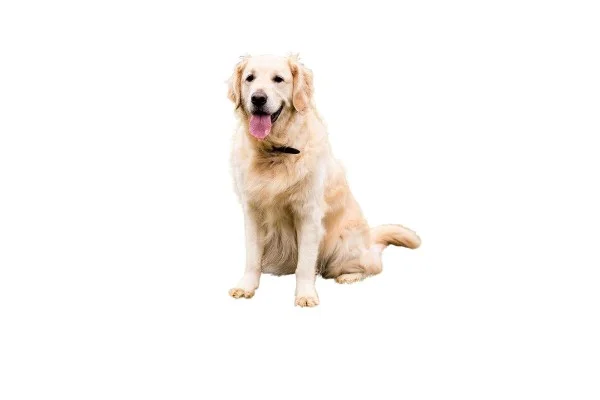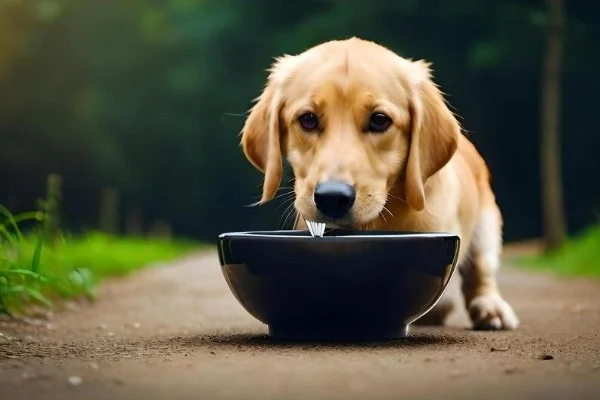Proper nutrition is vital for Golden Retrievers at every stage of their life. Golden Retriever Feeding Chart By Age helps guide owners in providing the right nutrients at each phase, from energetic puppies to active adults. Each stage requires specific dietary considerations to ensure optimal health and development. A well-balanced diet supports growth, maintains weight, and promotes overall well-being.
I will provide a golden retriever feeding chart by age to help you navigate their nutritional needs from puppyhood to adulthood.
Puppy Feeding Chart (0-12 Months)

Early Puppy Stage (0-6 weeks)
Nutrients from Mother’s Milk
What is the golden retriever feeding chart by age? During the early stages of a Golden Retriever puppy’s life, they receive all necessary nutrients from their mother’s milk. This period is crucial for the development of their immune system and growth.
Mother’s milk is rich in antibodies, essential proteins, fats, and other nutrients that support the puppy’s early development and protect them from illnesses.
Introducing Puppy Food
As puppies approach the end of this stage, around 3 to 4 weeks old, you can start introducing puppy food. Begin with soft, moistened food to make the transition from mother’s milk easier.
This weaning process involves gradually decreasing milk intake while increasing solid food. Introduce high-quality, nutritionally balanced puppy food to ensure they receive all the necessary nutrients for growth.
Mid Puppy Stage (6 weeks – 6 months)
Increased Nutritional Needs
As puppies grow, their nutritional needs change. This stage involves frequent feedings to support their rapid growth and high energy levels. Puppies are very active and need sufficient calories to fuel their play and development. Ensuring they get the right balance of nutrients is crucial for their bone development, muscle growth, and overall health.
Feeding Frequency and Amount
Here’s a general guideline for feeding frequencies and food amounts during this stage:
These recommendations are general guidelines and can vary based on the individual puppy’s metabolism, activity level, and specific growth rate. Always monitor your puppy’s weight and adjust portions accordingly.
Late Puppy Stage (6 months – 12 months)
Gradual Shift to Fewer Meals
During the late puppy stage, Golden Retrievers undergo significant growth spurts and gradually transition to fewer meals. By around 6 months, most puppies are fed 2-3 times a day. Reducing meal frequency helps in managing their energy levels and adapting them to adult feeding routines.
Transition to Adult Food
This stage is also a good time to start thinking about the transition to adult food, typically around the one-year mark, depending on the puppy’s development. The switch should be gradual to prevent digestive issues. Consult your veterinarian to determine the best time to transition based on your puppy’s growth patterns and specific needs.
Golden Retriever Feeding Chart By Age | Adult Feeding Chart (1+ Years)

Considerations for Adult Feeding Amounts
Factors Affecting Portion Size
Feeding an adult Golden Retriever requires careful consideration of several factors, including weight, activity level, and the type of food (calorie content). Active dogs with higher energy expenditures will need more food than less active ones.
Additionally, the quality and calorie density of the food will influence portion sizes. Always choose high-quality dog food to ensure your Golden Retriever gets the necessary nutrients.
Personalized Recommendations
Consulting a veterinarian for personalised recommendations is important. They can provide advice based on your dog’s health, weight, and activity level. Regular check-ups help in adjusting the diet to meet your dog’s evolving needs and ensure they maintain a healthy weight.
General Adult Feeding Guidelines
Daily Food Intake
Adult Golden Retrievers typically eat twice a day. Here are general guidelines for daily food intake:
These ranges provide a baseline, but it’s important to adjust portions based on your dog’s specific needs. Regularly monitoring their weight and body condition will help ensure they are receiving the right amount of food.
Senior Feeding Chart (7+ Years)

Nutritional Adjustments for Senior Dogs
Lower Caloric Needs
As Golden Retrievers age, their metabolism slows down, and they typically require fewer calories. Senior dogs often become less active, which means they need less energy from their food.
Feeding a senior-specific diet can help manage their weight and provide nutrients that support joint health and mobility.
Special Dietary Considerations
Older dogs may develop specific health issues such as arthritis, dental problems, or kidney disease.
Senior dog foods often contain ingredients that cater to these needs, like glucosamine for joint health or reduced phosphorus levels for kidney function.
Consulting a veterinarian for a tailored feeding plan is essential to address any health concerns.
General Senior Feeding Guidelines
Adjusting food intake based on weight, activity level, and health status is crucial for maintaining your senior Golden Retriever’s health and quality of life. Now you know, what is the golden retriever feeding chart by age and cup size.

Comprehensive Nutrition for Golden Retriever Puppies
Growth is an essential stage in a dog’s life, characterised by significant changes, discoveries, and new encounters. During this critical period, a puppy’s immune system gradually develops, making it crucial to provide nutritional support that helps bolster their natural defenses.
1. Antioxidants and Vitamin E
To support your puppy’s developing immune system, a diet enriched with a complex of antioxidants, including vitamin E, is beneficial.
Antioxidants play a key role in neutralizing harmful free radicals, thereby protecting cells from damage and supporting overall immune function.
Vitamin E, specifically, helps enhance the immune response, ensuring your puppy is better equipped to fend off illnesses and infections as they explore their new world.
2. Healthy Skin and Coat
A Golden Retriever’s skin and coat are not just important for their appearance but are also indicators of their overall health.
Nutrition plays a vital role in maintaining healthy skin and a shiny coat, acting as a barrier against environmental irritants and infections.
3. EPA, DHA, and Borage Oil
This formula helps support the skin’s barrier role and maintains skin and coat health through an exclusive complex that includes essential fatty acids EPA (eicosapentaenoic acid) and DHA (docosahexaenoic acid).
These omega-3 fatty acids are known for their anti-inflammatory properties, which help reduce skin irritation and promote a healthy coat.
Additionally, the diet is enriched with borage oil, which is rich in gamma-linolenic acid (GLA). GLA helps improve skin hydration and elasticity, contributing to a softer and more lustrous coat.
4. High-Quality Protein and Prebiotics
Digestive health is fundamental to your puppy’s overall well-being. A combination of nutrients, including high-quality protein (L.I.P.*) and prebiotics, supports digestive health and the balance of intestinal flora.
L.I.P. Proteins
Proteins selected for their very high digestibility (L.I.P. – Low Indigestible Protein) ensures that your puppy efficiently absorbs the necessary nutrients. This high digestibility reduces the risk of digestive upsets and contributes to better overall health.
Prebiotics and Intestinal Flora
Prebiotics like FOS (fructooligosaccharides) play a significant role in maintaining a healthy gut microbiome. They stimulate the growth of beneficial bacteria in the intestines, enhancing digestion and nutrient absorption. A balanced intestinal flora is crucial for preventing gastrointestinal issues and ensuring your puppy produces good quality stools.
Conclusion
Proper feeding is essential to maintain the health and happiness of your Golden Retriever throughout their life stages. From the early puppy stage to their senior years, understanding and adjusting their diet based on age, activity level, and health status ensures they receive the right balance of nutrients.
Regular consultations with a veterinarian are recommended to address any concerns and receive personalized advice for your dog’s diet. Now you know, what is the golden retriever feeding chart by age?




